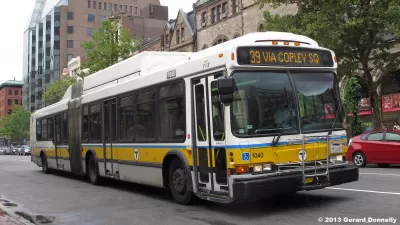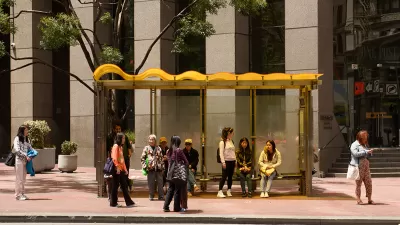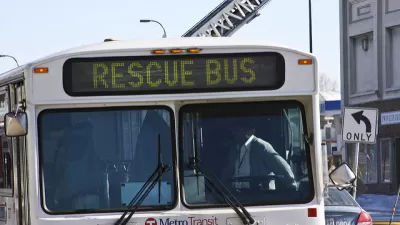Cities like St. Louis, Denver, and Minneapolis have have fewer bus drivers than the transit system requires. The shortages are effecting the quality of service.

Around the United States, cities are having trouble hiring the bus drivers they need to keep systems running. Last week, St. Louis's bus service was so understaffed, buses couldn't make trips. "MetroLink, which runs St. Louis’s 83 bus routes and 46 miles of light rail, blamed an “unusually high number of operators calling off work” that Monday. Transit union leaders said Metro simply hasn’t hired enough workers to run its system," Aaron Short writes.
Whether the issue was the fault of the agency or its drivers, it's clear that not having enough drivers is a problem in many communities. "Thanks to the labor shortage, bus service has been struggling in Denver, San Francisco, Miami, Omaha, Nebraska, Minneapolis, Toledo, OH, and northern New Jersey, drivers and union leaders told Streetsblog," Short writes. There are 188 unfilled positions for bus and rail in Denver alone.
Many who would drive say they can’t afford to live in the cities they drive for because the rent is too high. The Denver bus service and San Francisco's Muni have both dealt with this issue. "With housing out of their price range, a lot of drivers work six to seven days a week and live 90 minutes to two hours away in places like Sacramento, Modesto, Stockton, and Patterson. Some even drive part-time for ride hail companies to supplement their income," Short writes.
FULL STORY: Driver Shortages Causing Transit Delays Nationwide

Study: Maui’s Plan to Convert Vacation Rentals to Long-Term Housing Could Cause Nearly $1 Billion Economic Loss
The plan would reduce visitor accommodation by 25,% resulting in 1,900 jobs lost.

North Texas Transit Leaders Tout Benefits of TOD for Growing Region
At a summit focused on transit-oriented development, policymakers discussed how North Texas’ expanded light rail system can serve as a tool for economic growth.

Why Should We Subsidize Public Transportation?
Many public transit agencies face financial stress due to rising costs, declining fare revenue, and declining subsidies. Transit advocates must provide a strong business case for increasing public transit funding.

How to Make US Trains Faster
Changes to boarding platforms and a switch to electric trains could improve U.S. passenger rail service without the added cost of high-speed rail.

Columbia’s Revitalized ‘Loop’ Is a Hub for Local Entrepreneurs
A focus on small businesses is helping a commercial corridor in Columbia, Missouri thrive.

Invasive Insect Threatens Minnesota’s Ash Forests
The Emerald Ash Borer is a rapidly spreading invasive pest threatening Minnesota’s ash trees, and homeowners are encouraged to plant diverse replacement species, avoid moving ash firewood, and monitor for signs of infestation.
Urban Design for Planners 1: Software Tools
This six-course series explores essential urban design concepts using open source software and equips planners with the tools they need to participate fully in the urban design process.
Planning for Universal Design
Learn the tools for implementing Universal Design in planning regulations.
City of Santa Clarita
Ascent Environmental
Institute for Housing and Urban Development Studies (IHS)
City of Grandview
Harvard GSD Executive Education
Toledo-Lucas County Plan Commissions
Salt Lake City
NYU Wagner Graduate School of Public Service





























